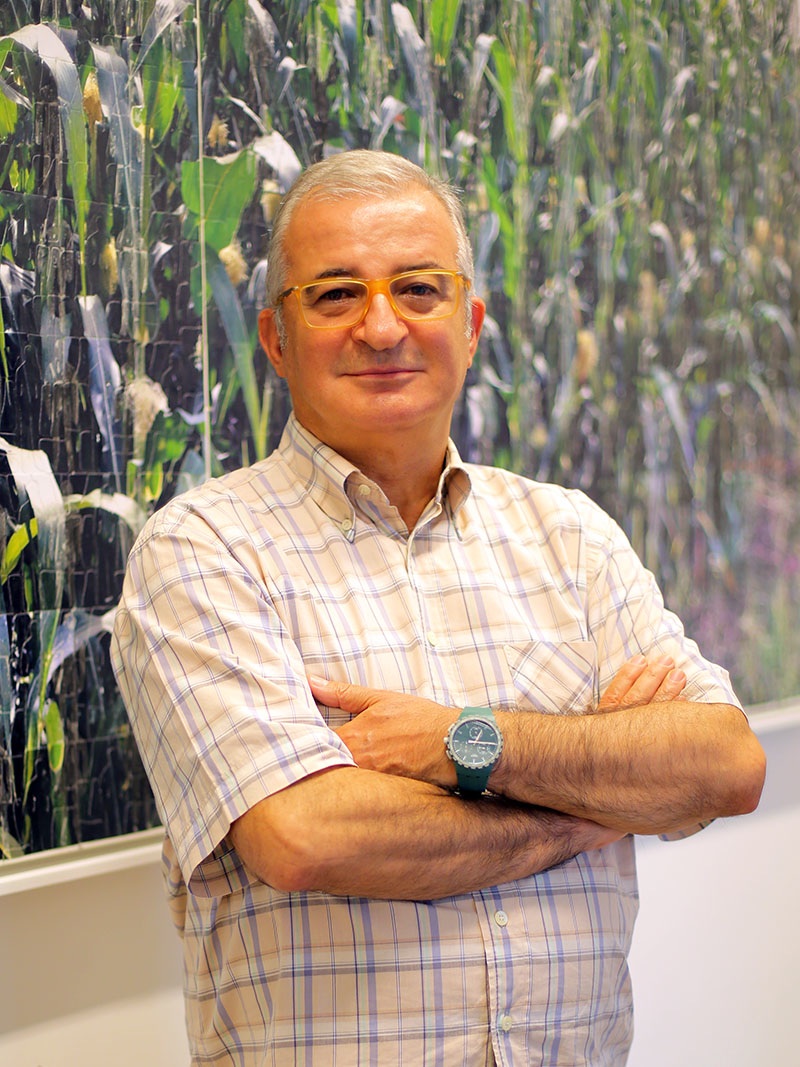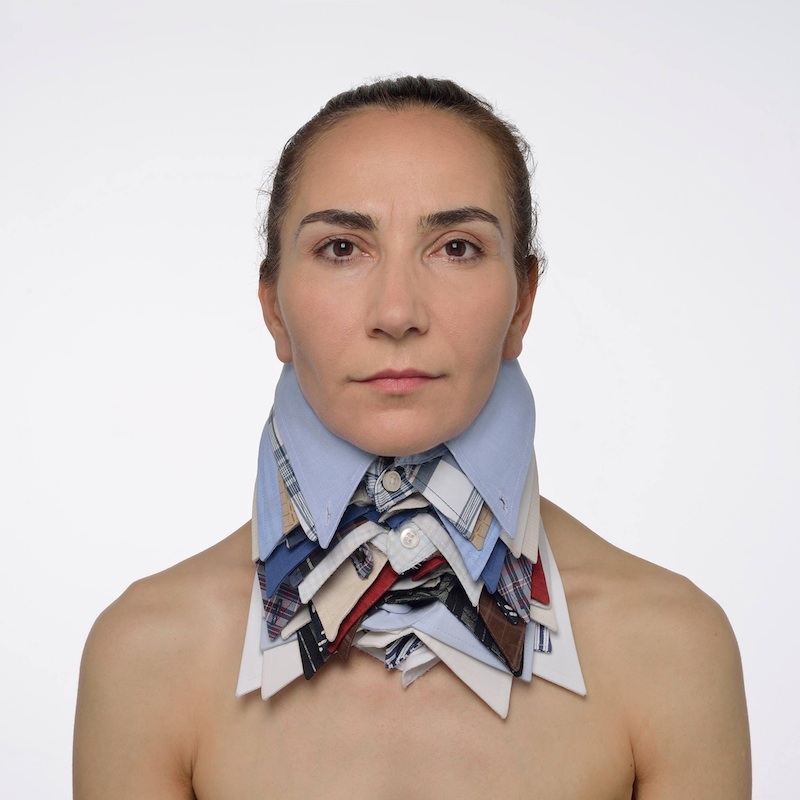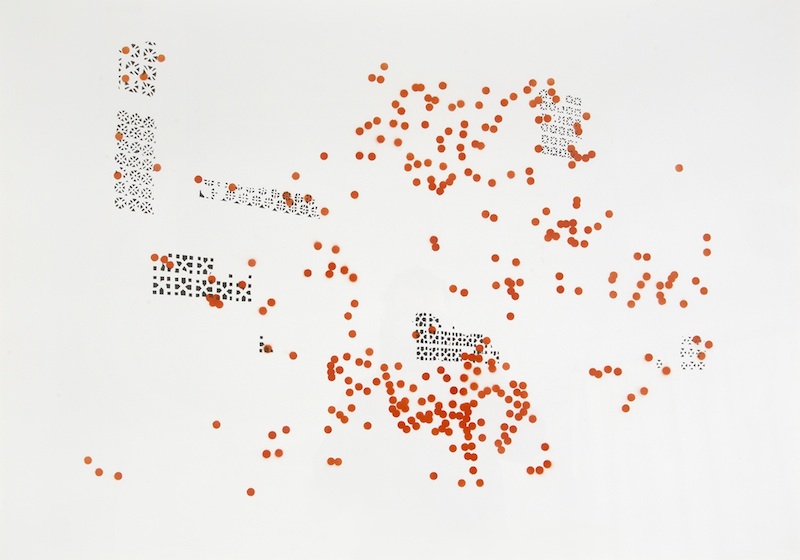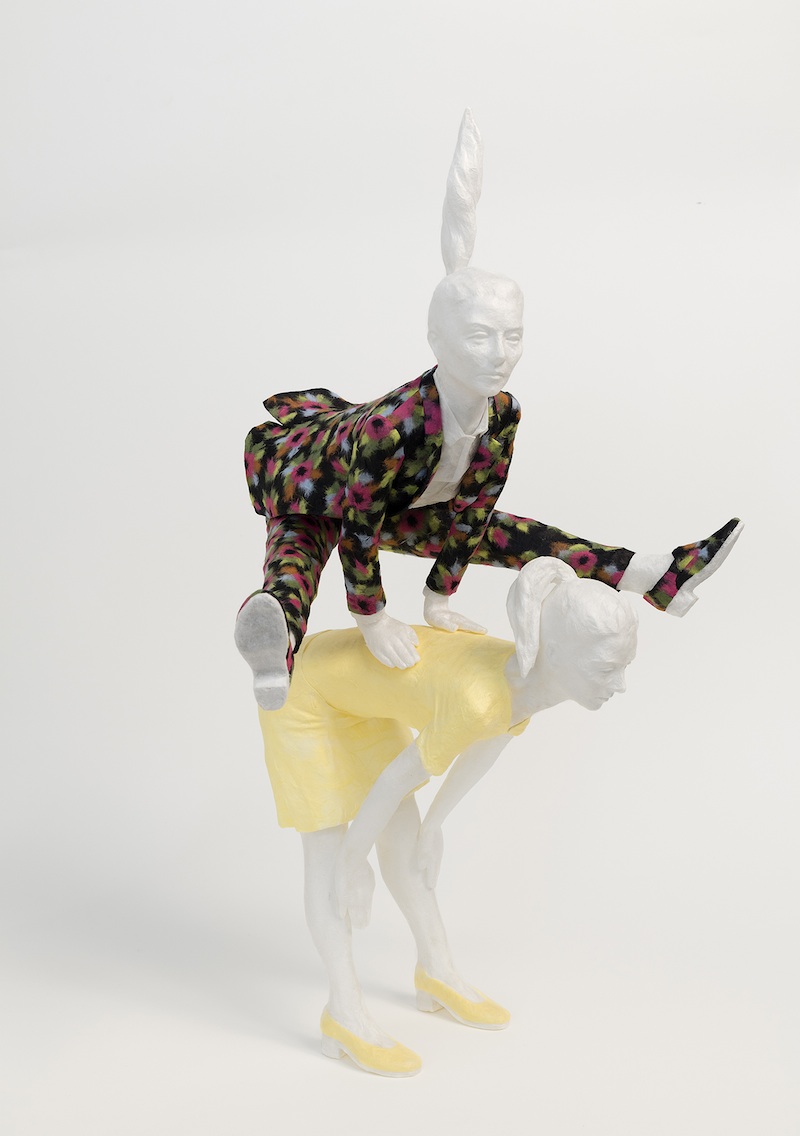Zilberman Gallery opened its second branch in Berlin last year, while its original Istanbul location has been operating since 2008. Located in a turn-of-the-century building in Berlin’s Charlottenburg neighborhood, the space contains both a gallery and an artist-in-residency program. Originally home to one of the first galleries for modern art, more than a hundred years ago, it is today again home to some of the most exciting contemporary art galleries in Berlin.
We spoke to owner Moiz Zilberman about his decision to launch a second gallery in Berlin and the exciting line-up of critical voices he has collected for representation with the gallery. The latest exhibition ‘Sympathie’, with works by Mehtap Baydu and Peter Anders will open during Berlin Art Week, and the gallery will also show the work of Azade Köker at the Art Berlin fair next week.

Portrait of Moiz Zilberman // Photo by Üzgün Yılmaz, courtesy of Zilberman Gallery
Alison Hugill: What led you to open a branch of Zilberman Gallery in Berlin last year, after 8 successful years of operating your gallery in Istanbul?
Moiz Zilberman: Zilberman Gallery was founded in Istanbul in 2008 to promote contemporary artists from Turkey internationally and to introduce international artists to the local art scene. As a result of limited numbers of art institutions and government support in Turkey, we have a different model. Rather than being just a commercial gallery, we give importance to becoming a hub of research and discussions. Therefore, sometimes it is challenging to be understood by international members of the art community. With this new enterprise in Berlin, our aim was to expand the scope of our activities in Istanbul to one of the most exciting art capitals in Europe. The exchange between two opposite yet historically linked cities excites us as well. Our artist residency program offered our represented artists the opportunity to live and work in Berlin, thus strengthening the gallery’s activities internationally, increasing its visibility, and developing new relationships with art professionals and various audiences. We are very happy about the interest from the local audience.
The gallery already has a strong presence at international art fairs. Last year, in addition to Contemporary Istanbul, we also partook in fairs in Brussels, Hong Kong, Dubai, Vienna and Basel; and one of these contributions was in the form of a solo show. In the coming year, we are planning to take part in additional fairs in various locations. To enrich these already established relationships, I believe that we took an important step by opening up a new gallery space and a residency program in Berlin last year.
AH: Many of the artists you represent are Turkish and Middle Eastern artists. How does the geography and socio-political context of the artists inform your curatorial selection?
MZ: I should be stressing that we do not limit ourselves to a specific geography or any socio-political concern. Still, it is also crucial for us not to abandon the fact that the Western canonization is still strong and therefore supporting artists from the Middle East is important. Nevertheless, what we focus on is the critical potential of the artworks. I prefer to call the line of the gallery “critical”, including but not limited to socio-political artworks. In such difficult times, we believe in the power of creating places to come together to raise critical questions and discussion.
AH: Many of the artists you show in the gallery produce works that have this critical weight, such as represented artist Heba Y. Amin’s graffiti intervention on the show ‘Homeland’. Is it crucial that the artists you show raise political or philosophical questions in their work?
MZ: Indeed, Heba Y. Amin’s intervention into this mainstream Hollywood series was shocking and clever: an urgent criticism of how the East is still perceived. For me, art is definitely a way to protest and to criticize. In a similar fashion, without doubt, is our artist Aisha Khalid and her generation of miniature painters in Pakistan. How they challenged the traditional form and content of this particular style is revolutionary. Another example that comes to mind is Erinç Seymen. Zilberman Gallery–Istanbul will open, on September 12th, the artist’s show ‘Homo Fragilis’. Seymen problematizes the idea of normative family and ownership; “safe symbiosis, promises of prosperity.” By using the power of metaphors, he strongly criticizes—but does not attack—the traditional values of hetero-normativity. Recently, Erinç Seymen interviewed another artist from our gallery, Zeynep Kayan. In the interview, they converse about the characters, who wander around like ghosts in the cities in Kayan’s images and videos—“anti-flaneur” in their words—and also the feeling of panic and uncertainty that occupies the works. Isn’t it how we all feel nowadays? With these examples, I can only give you a hint of how our artists challenge certain idea(l)s in a subtle yet vigorous manner.

Mehtap Baydu: ‘Long Neck’, 2015, fine art print, 100 x 100 cm // Courtesy of the artist © Mehtap Baydu
AH: Why is it important for you that Zilberman Gallery fulfills its “social responsibility” to educate audiences with artist talks, lecture performances, book launches, etc?
MZ: I do not agree with the term “educate” as it creates a linear hierarchy system, but I can say that there is a lot of responsibility on art galleries. In Berlin, from the very beginning, we have been giving importance to creating a platform for individuals to come together for conversations. This is a tendency emerging from our experiences in Turkey. In my opinion, art galleries are not only spaces for profit but, most of the time, they have to act as non-profit art institutions, providing artists a space to share their works with the audience and creating free platforms for discussions. In this manner, we have always been aware of our social responsibilities. It’s important for us to provide opportunities for emerging artists to present their works through our non-profit exhibition projects at our project space in Istanbul, and the annually-held ‘Young Fresh Different’ show, the eighth edition of which took place this year. Similarly, the artistic research grant, ‘Zed Grant’, is part of this responsibility. We also take the competition in the art scene into consideration and how such possibilities are not provided easily for emerging artists, especially in Turkey.
We’re also happy to have hosted five artists in Berlin—such as Zeynep Kayan, Antonio Cosentino, Walid Siti—in the frame of our artist residency program, which we think has helped them establish strong relationships with the local art community. There are enormous materials to use and interact with in a city like Berlin that contains various communities and histories. I should also add that with each artist the white residency space totally transforms into another entity in the course of the artist’s, well, occupation. Moreover, the catalogues we have been publishing for each exhibition with the texts of writers, art historians, critics such as Eva Scharrer, Fiona McGovern, Uwe Fleckner engender a platform for research. Besides that, the talks we organized—for example with art critics Hili Perlson and Timo-Kaabi Linke—for Aisha Khalid’s shows create a possibility to dwell on and dig into the topics our artists engage with. I have witnessed some very appealing conversations between the audience and our artists during these talks. As I stressed before, it could be said that we use the white cube more than just for commercial purposes and aim to act as an institution as well.

Peter Anders: ‘Fucking Zone’, 2013, pencil and colored lacquer on cardboard, 70 x 100 cm // Courtesy of the artist © Chroma
AH: Can you tell us about who you’ll be showing during Berlin Art Week, both in the gallery and at the Art Berlin fair?
MZ: At Zilberman Gallery–Berlin, we will have the exhibition ‘Sympathie’ with the works of Mehtap Baydu and Peter Anders, invited by René Block between September 9th and November 11th. Curator René Block invited both artists with the statement that Sympathie “is not a ‘Thema’, not even a motto. Sympathie is a message about being in a good mood and harmony, especially in such times as we are going through.” Block, Anders and Baydu all met in Kassel. The story behind their friendships reveals itself in Berlin, and our gallery becomes the meeting point. At the beginning, the works of Baydu and Anders don’t seem similar. To give an incredibly simple example: while Anders is working more with black and white, Baydu uses traditional fabric patterns from Turkey. However, the common point of both artists is the way they both deal with problematic topics such as gender or history by spicing them up with mockery: Baydu and Anders point out the absurdities in bureaucracy or our everyday language.
And, at this year’s Art Berlin, we will represent Istanbul and Berlin-based artist Azade Köker. Köker’s oeuvre has a lot to do with the dichotomy of nature and city. Inevitably, effects of neo-liberal decisions on urban planning and global warming are some topics Köker contemplates, as well as cities, multiculturalism and the aftermath of destructions, deterioration; borders and power structures, migration and war. In a painting, a forest that could appear “romantic” at first sight, might unexpectedly camouflage a tank or disposal of plastic bags. A paper sculpture, ‘Entkettet’ (2017) will be on display at Art Berlin. ‘Entkettet’ is a chain made out of paper that slowly rots and we don’t know if it holds something or not. Strong references to the political situation in the East are revealed. I’m curious how the visitors and the press in Berlin will react to this big installation.
Exhibition Info
ZILBERMAN GALLERY
Mehtap Baydu & Peter Anders: ‘Sympathie’
Exhibition: Sep. 09 – Nov. 11, 2017
Goethestraße 82, 10623 Berlin, click here for map
ART BERLIN
Azade Köker at Zilberman Gallery, Booth 2B06
Exhibition: Sep. 14–17, 2017
Station Berlin, click here for map





















